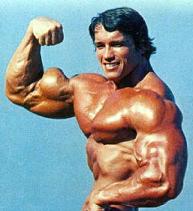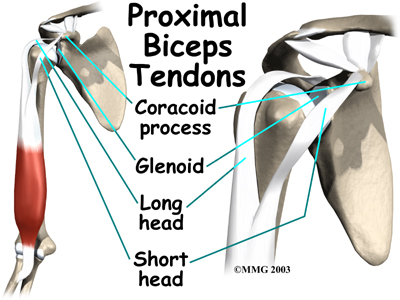Time for a Gun Show
So something interesting happened the other day while I was training one of my clients. He’s actually my bosses bosses boss, so he knows his way around a bench press, so to speak. We’d made it through about 75% of the workout, and I told him we were going to do some reverse grip bicep curls, to which he laughed.
“Come on man, how is that going to make me stronger and lose weight? Plus, isn’t the bicep curl like one of the least functional exercises there is?”
Sure, it may not be functional in a stand on one foot on a stability ball while pressing an elastic and deadlifting a kitten while singing the Declaration of Independence in C flat, backwards. Instead of saying this, I simply rolled up my right sleeve and let the twins do the talking.
 Actually, I asked him a question right back (I know, never answer a question with a question, but hey, my blog, my story) to see how many movements he could think of that involved the bicep, either directly or indirectly.
Actually, I asked him a question right back (I know, never answer a question with a question, but hey, my blog, my story) to see how many movements he could think of that involved the bicep, either directly or indirectly.
“Horizontal rowing, vertical pulling, deadlifts, loaded carries, flyes (either cables or dumbells), chinups, back squats (to stabilize the bar against the upper thoracic spine and upregulate the scapular stabilizer muscles), secondarily on any pressing movement or anything that involved shoulder flexion, and….okay fine I’ll do some bloody bicep curls.”
Funny thing is that no matter how much you lift weights, how much you can deadlift or bench, or whateverthehell you’re trying to do, the first thing people notice about you is your arms. I’ve seen guys who weigh around 160 pounds pull 400 pounds off the floor, which is admirable as hell, but they look like marathon runners as opposed to weight lifters.
For those wondering about why the biceps are an important muscle group to work, I’ll break it down for you. First, it’s one of the only shoulder muscles that proximally attaches above the shoulder into the glenoid capsule, beside the shoulder at the coracoid process, and can work in a manner to pull the humerus into the glenoid fossa, much like a rotator cuff on the front, or more appropriately like the hamstrings group is to the knee. (Considering the fact that the has attachment points that blend directly into the knee joint capsule and the commonalities are extended further, yo!!)
 Couple that with the fact that the biceps play a major role in the functional anterior fascial arm lines outlined by Meyers in Anatomy Trains, and the concept that shoulder injuries could have something to do with secondary sources, like weakness in the anterior arm muscles translating into excessive work by the scapular and glenohumeral muscles, and we have a trifecta of “where’s the beach??” awesomeness.
Couple that with the fact that the biceps play a major role in the functional anterior fascial arm lines outlined by Meyers in Anatomy Trains, and the concept that shoulder injuries could have something to do with secondary sources, like weakness in the anterior arm muscles translating into excessive work by the scapular and glenohumeral muscles, and we have a trifecta of “where’s the beach??” awesomeness.
Interestingly, using a biceps exercise to detect underlying scapular stability issues can be very helpful, as people with weakness in their lower traps and thoracic extensors will have their shoulders roll forward and elevate to reduce the length of the lever arm to assist in completing the movement, or the muscles will completely let go because they aren’t strong enough to resist this external for. This is most obvious in a poorly executed standing barbell curl, or in a preacher curl. It’s sort of analogous to doing a row without any scapular retraction, which drives the humerus forward into the anterior portion of the capsule.
So with that said, yeah, biceps are a pretty big deal. I’ve started rotating in a biceps-specific exercise in my own workouts every second day, as well as a triceps specific exercise, and it’s not only helped my chinups and other pulling movements, but it’s made me focus more on the scapular stabilizers while performing the movements in order to get them holding the shoulder blade tight to the spine, which makes it a double-whammy exercise. My grip strength has also increased in the past 6 weeks (via handgrip dynamometer) from 72 kg to 78 kg, all without heavy deadlifting.
I would recommend biceps specific work to pretty much anyone looking to achieve some form of aesthetic change, performance enhancement of upper body pulling movements, needing scapular stability training. I would avoid it with anyone exhibiting any issues with rotator cuff function, neck pain, extremely poor thoracic kyphosis, or an internally rotated posture, but would be willing to throw them into the mix once the above mentioned issues were sufficiently dealt with, as long as the load was appropriate. You can tell if a load is appropriate if you can maintain a neutral scapular position throughout the movement and don’t need to throw your body into it except maybe on the last rep as a way to simply finish the movement. It’s too heavy if you look like this guy.
To get more bang for your buck, switch your grip each workout to vary the type of fibers being worked and to stimulate the muscle in slightly different ways. Small variations can make a big difference in adaptation.
One Response to Time for a Gun Show